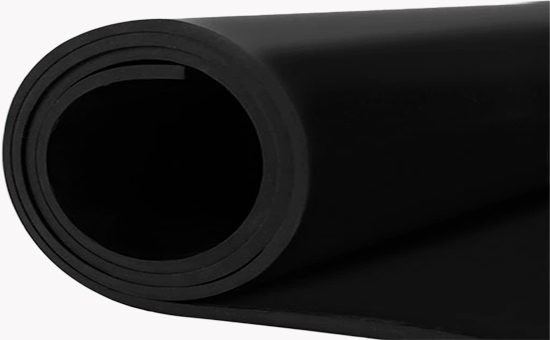Nitrile reclaimed rubber, processed from waste nitrile rubber products, is an ideal raw material for replacing virgin nitrile rubber in the production of various oil-resistant and wear-resistant rubber products. It can be used alone or in combination with virgin nitrile rubber. The hardness of nitrile reclaimed rubber differs from that of virgin nitrile rubber. If nitrile reclaimed rubber is added to the formulation of nitrile rubber products, will it affect the hardness of the rubber? How significantly does nitrile reclaimed rubber affect the hardness of nitrile rubber products?
Hardness is an important indicator characterizing the rigidity (stiffness) of rubber materials and represents the ability of rubber to resist deformation under external force. In China, the hardness of rubber is generally measured using a Shore durometer. Rubber with high hardness has low deformation and good wear resistance but poor elasticity and is prone to brittleness; rubber with low hardness has excellent elasticity but weaker wear resistance. When producing rubber products of different hardness using nitrile rubber/nitrile reclaimed rubber, it is necessary to adjust the hardness of the rubber according to actual requirements.

Estimated hardness = Rubber extruded hardness + Filler (or softener) dosage × Hardness effect value. From the rubber hardness estimation formula, it can be seen that the inherent hardness of the rubber, the rubber filler, and the amount of softener are the main factors affecting the hardness of the rubber compound E5LYY610. Nitrile reclaimed rubber has a certain range of hardness by itself, and when blended into virgin nitrile rubber, it will affect the overall hardness of the compound. The specific degree of hardness change depends on the hardness of the nitrile reclaimed rubber and the conditions of other additives.
For each additional part of fast-press black, high-abrasion carbon black, furnace black, the hardness of the reclaimed rubber vulcanizate increases by 1/2 hardness value; for each additional part of medium super-abrasion carbon black or super-abrasion carbon black, the hardness of the reclaimed rubber vulcanizate increases by 2.5 hardness values; for each additional part of semi-reinforcing furnace black, the hardness of the reclaimed rubber vulcanizate increases by 1/3 hardness value; for each additional part of pyrolytic carbon black, the hardness of the reclaimed rubber vulcanizate increases by 1/4 hardness value; soft carbon black will affect the hardness of the reclaimed rubber vulcanizate.

The hardness of regenerated nitrile rubber typically ranges among 40-75 degrees (Shore hardness), and the specific hardness varies depending on factors such as the source of raw materials and production processes.
High-hardness nitrile oil-resistant shock-absorbing rubber products typically incorporate 10–30 parts of reclaimed nitrile rubber. In some inner layer rubber compound formulations for oil-resistant hoses, the hardness of vulcanized reclaimed nitrile rubber may reach 66 degrees; in rubber products with metal frameworks, the bonding strength is greater when the hardness of reclaimed nitrile rubber reaches around 75 degrees. When using reclaimed nitrile rubber to reduce costs in nitrile rubber products with different hardness requirements, it is necessary to select reclaimed rubber with suitable hardness according to actual needs, reasonably determine the proportion of addition, and appropriately adjust the formulation.
Exclusive original article [commercial authorization] reprint, excerpt and excerpt in any form are prohibited without written authorization. Focus on Hongyun rubber: learn the process formula and raw material technology of producing rubber products from recycled rubber to help you reduce costs and increase profits